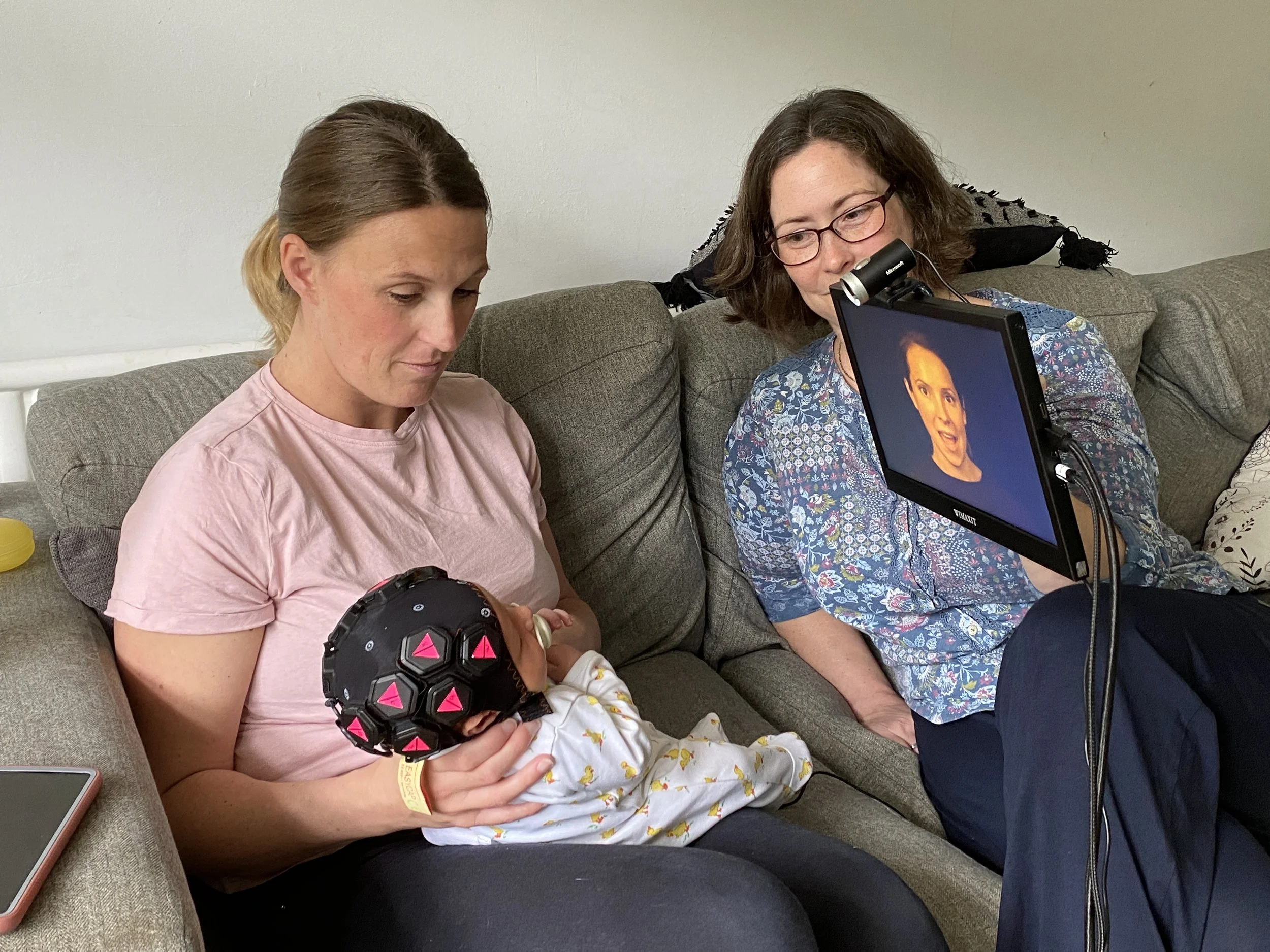Case Studies
Green Man Festival | University of Cambridge Neuro Optics Lab
We wanted to bring our work using wearable optical brain imaging to monitor dementia to life by allowing the public to take part! The Green Man music festival provided an excellent opportunity for this, as they have a field called Einstein’s Garden dedicated to science communication. We decided to run an experiment to explore the link between music and social engagement, which will be useful for music therapy in dementia. This project aimed to collect large-scale near-infrared spectroscopy (NIRS) data during the festival, and we will then take a machine learning (ML) approach to predict brain activity in the NIRS data and classify differences in the brain response depending on the type of music or whether it was being enjoyed with another person.
We were able to conduct this experiment with the use of the LUMO device made by Gowerlabs, Ltd. This device is wearable, easy to use and allows us to collect high density NIRS data quickly and robustly. In order to be able to perform brain monitoring in a field, Gowerlabs assisted us with procuring large batteries to power the LUMO throughout the day at the festival and helped us design new caps to cover the auditory cortex (vital for a music study!). This is the first time that high-density NIRS has been deployed at a festival and we are grateful to both Gowerlabs and Green Man festival for allowing us to realise such an ambitious project, with huge success!
Using a 30 dock cap with 8 tiles
Man’s Best Friend | Eötvös Loránd University
At Eötvös Loránd University in Budapest, research is being conducted on understanding the similarities and differences in how the dog and human brain process their environment. Although dogs have a very different evolutionary history to humans, our brains face similar challenges while we interact with each other.
In order to understand the brain, it is indispensable to have reliable measurements of how different brain regions respond to stimuli. LUMO provides similar precision to MRI but with significantly more flexibility. We hope to develop the system so we can take advantage of its flexibility and obtain precise brain measurements from dogs while they perform tasks.
Using a custom LUMO patch with 12 tiles
Infant Studies in Naturalistic Environments | PIPKIN
The Perinatal Imaging in partnership with families (PIPKIN) Study (www.pipkinstudy.com) aims to investigate how our world impacts and shapes our early behaviour, cognition and brain development; following families through pregnancy, neonatal and early infant stages of life.
In partnership with Gowerlabs, PIPKIN is optimizing a wearable high-density diffuse optical tomography system (LUMO) that offers enhanced capabilities for monitoring infants’ brain activity in naturalistic setups. Importantly, moving neuroimaging research into home-friendly settings is allowing us to (i) investigate how social and environmental contexts influence our earliest developmental trajectories by mapping individual differences in behaviour, cognition and brain function and (ii) to diversify our cohort population by engaging families who would not normally volunteer for research studies in a research/clinical environment.
Using a custom infant cap with 12 tiles



